Hello. It’s the first video in a list of videos that I’m going to record to show you an alternative vision of how our universe could possibly work.
If my guesses are right, at the end it will be something really huge and will change our understanding of the world.
It might be shocking and hard to believe that things can be like this, but let’s check.
It was really hard for me to decide what to start with, as despite these ideas seem simple and intuitive to me now, I find it really hard to make people see the whole picture of what I’m trying to describe.
So I will start not from the very beginning, but from a thing that seems more or less easy to explain. This gives clear predictions that can be checked in experiment if you have corresponding equipment (unfortunately I don’t have one).
As a starting point let’s provide a funny disproval that the speed of photon is constant.
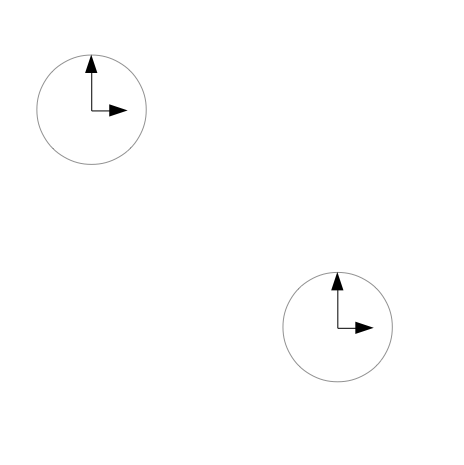
Let’s suppose we have 2 mechanical watches. Lets warm up the first one and cool down the second one.
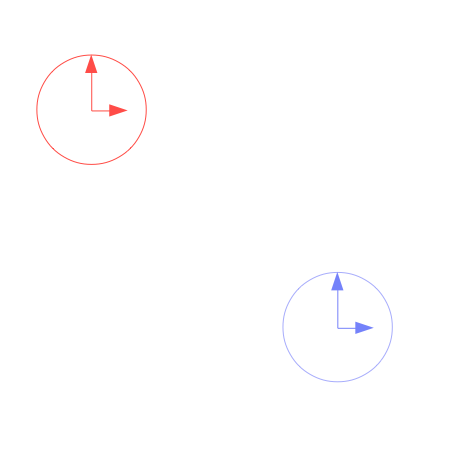
Cooled down watches make more ticks and warmed up watches make less ticks then they should per standard. It’s a known fact and watch makers warn you that you should use watches only in “normal conditions” to get correct time.
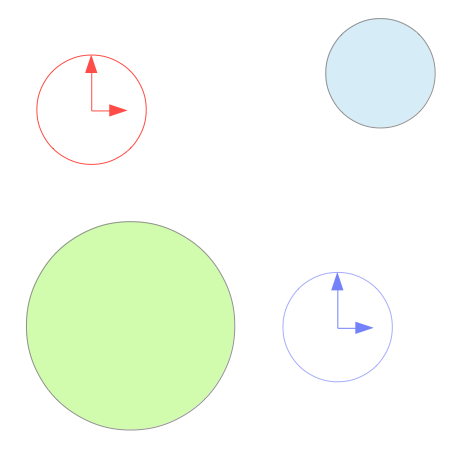
So we measure the time needed for photons to travel for example to the moon and back with each of these 2 watches and get different amount of time.
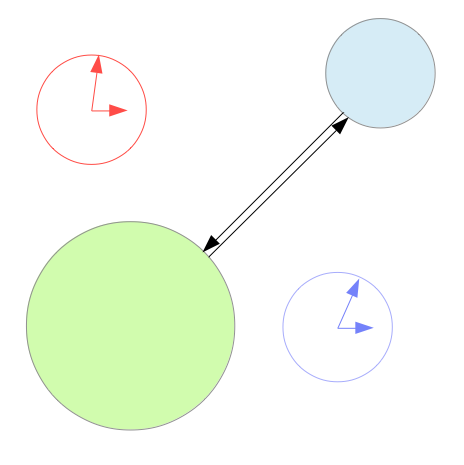
We divide the same distance by different amount of time and get different speed calculated using different watches! What a miracle!
It might sound funny to you, but isn’t it funny to think that watch, whose tick frequency depends on temperature, radiation do not depend on it’s own movement speed?
So now let’s list the postulates that are used for this video.
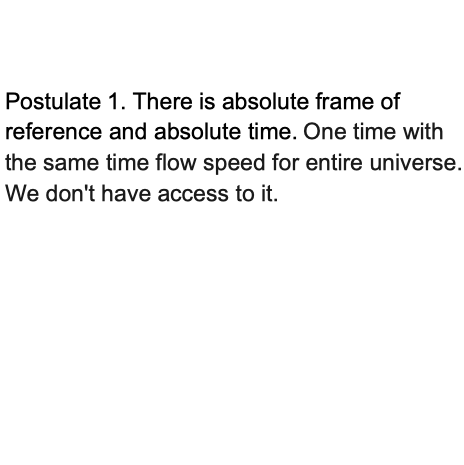
Postulate 1. There is absolute frame of reference and absolute time. One time with the same time flow speed for entire universe. We don’t have access to that absolute time.
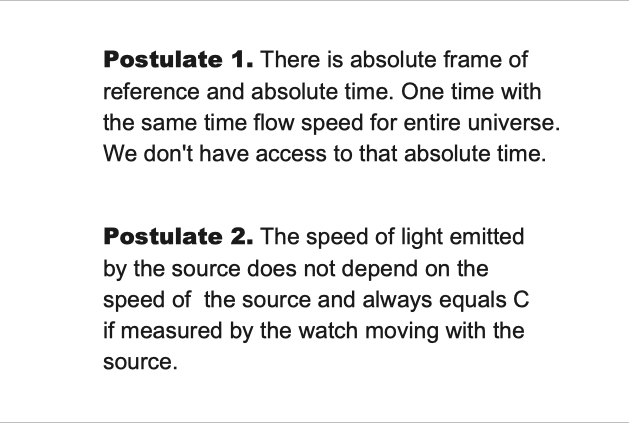
Postulate 2. The speed of light emitted by the source does not depend on the speed of source and always equals C if measured by the watch moving with the source.
So per these postulates the moving source has “local time” (actually it’s not local time, but local watches tick frequency that slows down as the source speeds up).
Important to note: we fully removed the part of the postulate where it says that the speed of light does not depend on the speed of observer. Also I do not touch the relativity of physical laws at the moment. Anyway it time tick frequency slows down, we get all the effects of relativity for moving source.
What I would like to discuss now is the consequences from these postulates. Especially I’m interested in how light would propagate for moving source.
Lets assume that all time measurements take place in the absolute frame of reference.
We assumed that there is absolute frame of reference and absolute time and that the speed of light from the source is always C. So for the moving source light have to propagate with the same speed in all directions if measured by the source (because it spends the same amount of absolute time for that movement). As a result wave front of light from any source should look like a sphere.
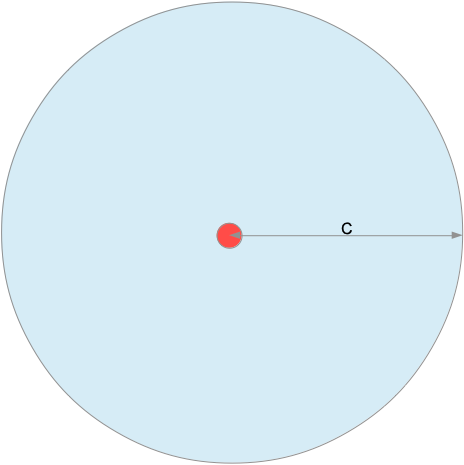
Let’s assume that the speed of the first light source is 0. This source emits light and it has speed C in all directions. After one second the wave front will look like a sphere with radius C
Now let’s assume that the speed of the second source equals v.
Let’s assume that the source emits photon of light in the direction of own movement. And let’s assume that both the source and the photon move for one second. After that we see that the source passed distance v and the photon passed distance C. So the distance between the source and the photon is now C minus v.
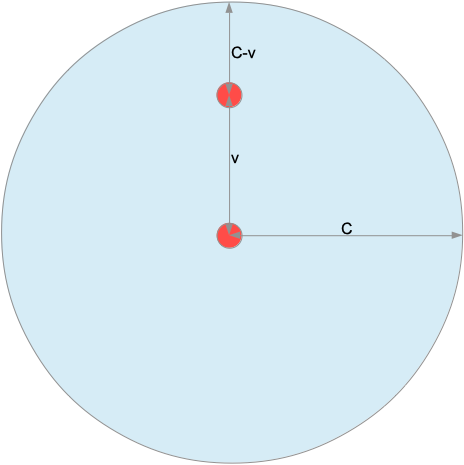
Earlier I mentioned that with selected postulates the light has the same speed in all directions from the source point of view, so the wave front will have to look like a sphere with a center in the expected position of the source and radius C minus v.
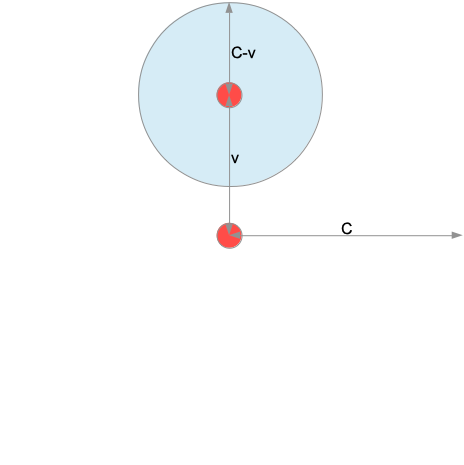
Otherwise the speed of light in the source frame of reference would be different in different directions.
Here we can see how light would have to propagate depending on the speed of source if our postulates were true.
You can see that when the speed of source is lower than C/2, wave front looks like a sphere – as usual. But when the speed of light is faster than C/2, we see something different. Sphere turns into a light cone.
The faster the speed v the smaller the light cone angle. Because the radius of the sphere is always C minus v. The larger v the smaller radius.
So for speeds lower than C divided by 2 we get sphere, for speeds higher than C divided by 2 we get cone.
There are 2 interesting things.
1. We see similar behaviour in cyclotron/synchrotron emission, Cherenkov emission, one sided astrophysical jets.
2. We can predict the angle of the cone depending on the speed of source v and check in experiment if prediction much observations.
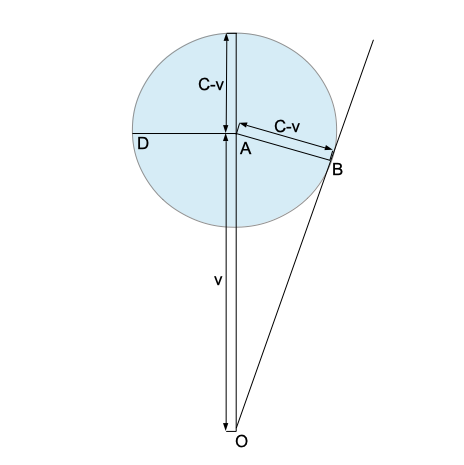
The predictions for the light cone angle can be calculated using simple geometry from the values of C and v. I hope the picture is self explaining.
Half of the angle would be
a = arcsin((C – v) / v).
You can see the formula on the screen
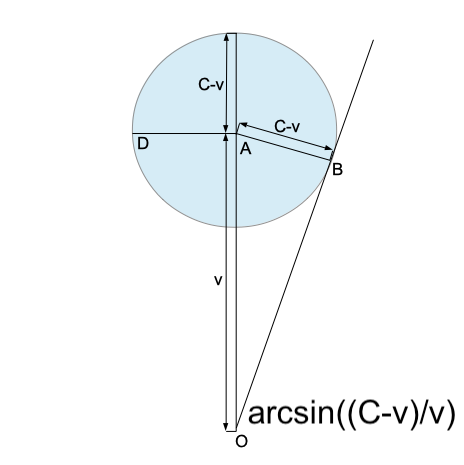
Another interesting thing is that there are no any exact predictions directly following from Einstein’s special relativity on the angle of the light cone. No any predictions on how exactly cyclotron emission turns into synchrotron emission.
Unfortunately I don’t have synchrotron to check these predictions. But somebody do have. That guy or guys can launch the experiment on synchrotron and check the cone angles depending on the source speed. And if they match the formula – it will be quite a big challenge for today physics.
The issue is that if the prediction matched the results of experiment, it would mean that there is absolute frame of reference and light from other sources can have any speed that is lower than C in absolute frame of reference. There can be even standing light. An example would be light emitted back by a source with speed = C/2.
Also it would mean that there can be a light with speed larger than C. The speed of light can be really huge – especially if you move towards the light with almost speed of light and your clock almost don’t tick. Imagine that you measure speed of light with clock that is almost not ticking. Dividing distance by almost 0 you can get almost infinity.
As a result some theories would have to be adjusted. Well.. in fact all the cosmology would have to be adjusted. So I will understand if this experiment does not happen in the nearest future. Nobody wants to loose what they were building through their live.
Again. I don’t have synchrotron and there is war in my country now, so no any synchrotrons for me in the nearest future.
But somebody do have access to synchrotron and he has a chance to make a major breakthrough in science (if experiment succeeds).
In the next videos I will try to show how these postulates simplify the world around us. Also at some point I will try to show what these postulates actually follow from. Because they are not the root.
The real postulates are a little bit deeper.
I have much more to say. It might be a journey that you never had.
The only real way to make described experiment happen is to spread out this idea enough by attracting attention to this video and to videos to follow after this one.
So please press like and subscribe. And let’s launch a revolution.
Let’s bring the logic back.
I should also mention that of course experiments with synchrotron where already launched. And of course data exists somewhere. That data can be checked and compared with predictions. But I’m afraid these experiments were launched back in the sixties and I can not find real data in open sources.
Anyway I find the ideas to follow worth exploring even without these predictions checked. You’ll see.
Thank you for your attention.